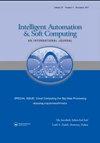CGraM: Enhanced Algorithm for Community Detection in Social Networks
IF 2
4区 计算机科学
Q2 Computer Science
引用次数: 2
Abstract
Community Detection is used to discover a non-trivial organization of the network and to extract the special relations among the nodes which can help in understanding the structure and the function of the networks. However, community detection in social networks is a vast and challenging task, in terms of detected communities accuracy and computational overheads. In this paper, we propose a new algorithm Enhanced Algorithm for Community Detection in Social Networks – CGraM, for community detection using the graph measures eccentricity, harmonic centrality and modularity. First, the centre nodes are identified by using the eccentricity and harmonic centrality, next a preliminary community structure is formed by finding the similar nodes using the jaccard coefficient. Later communities are selected from the preliminary community structure based on the number of inter-community and intra-community edges between them. Then the selected communities are merged till the modularity improves to form the better resultant community structure. This method is tested on the real networks and the results are evaluated using the evaluation metrics modularity and Normalized Mutual Information (NMI). The results are visualized and also compared with the state-of-the-art algorithms that covers louvian, walktrap, infomap, label propagation, fast greedy and eigen vector for more accurate analysis. CGraM achieved the better modularity and improved NMI values comparatively with other algorithms and gives improved results collaboratively when compared to previous methods.CGraM:社交网络中社区检测的增强算法
社区检测用于发现网络的非平凡组织,并提取节点之间的特殊关系,有助于理解网络的结构和功能。然而,就社区检测的准确性和计算开销而言,社交网络中的社区检测是一项艰巨而具有挑战性的任务。本文提出了一种新的社区检测算法——CGraM,该算法利用图的偏心度、谐波中心性和模块化度量来进行社区检测。首先利用偏心度和调和中心性识别中心节点,然后利用jaccard系数寻找相似节点,形成初步的群落结构。根据群落间边缘和群落内边缘的数量,从初步群落结构中选择后期群落。然后将选择的社团进行合并,直到模块化程度提高,形成更好的最终社团结构。在实际网络中对该方法进行了测试,并利用评价指标模块化和归一化互信息(NMI)对结果进行了评价。结果被可视化,并与最先进的算法进行比较,包括louvian, walktrap, infomap,标签传播,快速贪婪和特征向量,以获得更准确的分析。与其他算法相比,CGraM具有更好的模块化和改进的NMI值,并且与以前的方法相比,CGraM具有协同改进的结果。
本文章由计算机程序翻译,如有差异,请以英文原文为准。
求助全文
约1分钟内获得全文
求助全文
来源期刊

Intelligent Automation and Soft Computing
工程技术-计算机:人工智能
CiteScore
3.50
自引率
10.00%
发文量
429
审稿时长
10.8 months
期刊介绍:
An International Journal seeks to provide a common forum for the dissemination of accurate results about the world of intelligent automation, artificial intelligence, computer science, control, intelligent data science, modeling and systems engineering. It is intended that the articles published in the journal will encompass both the short and the long term effects of soft computing and other related fields such as robotics, control, computer, vision, speech recognition, pattern recognition, data mining, big data, data analytics, machine intelligence, cyber security and deep learning. It further hopes it will address the existing and emerging relationships between automation, systems engineering, system of systems engineering and soft computing. The journal will publish original and survey papers on artificial intelligence, intelligent automation and computer engineering with an emphasis on current and potential applications of soft computing. It will have a broad interest in all engineering disciplines, computer science, and related technological fields such as medicine, biology operations research, technology management, agriculture and information technology.
 求助内容:
求助内容: 应助结果提醒方式:
应助结果提醒方式:


